Choosing the best material for landscaping depends on the kind of crop you plant and whether you prioritize aesthetics or functionality in your gardening.
Landscape fabrics come in different types of shapes, materials, and sizes, so you’ll need proper research to make the right choice. Here, you’ll find all the answers you seek. We’ll start with a summary of landscaping for beginners and why it’s an appealing practice.
Then, you’ll learn about the different types of materials, picking the best fabric, like VEVOR’s heavy-duty weed control fabric, installation tips, and the challenges of using landscape fabric. Stay strapped as we go on this journey to bettering your garden together.
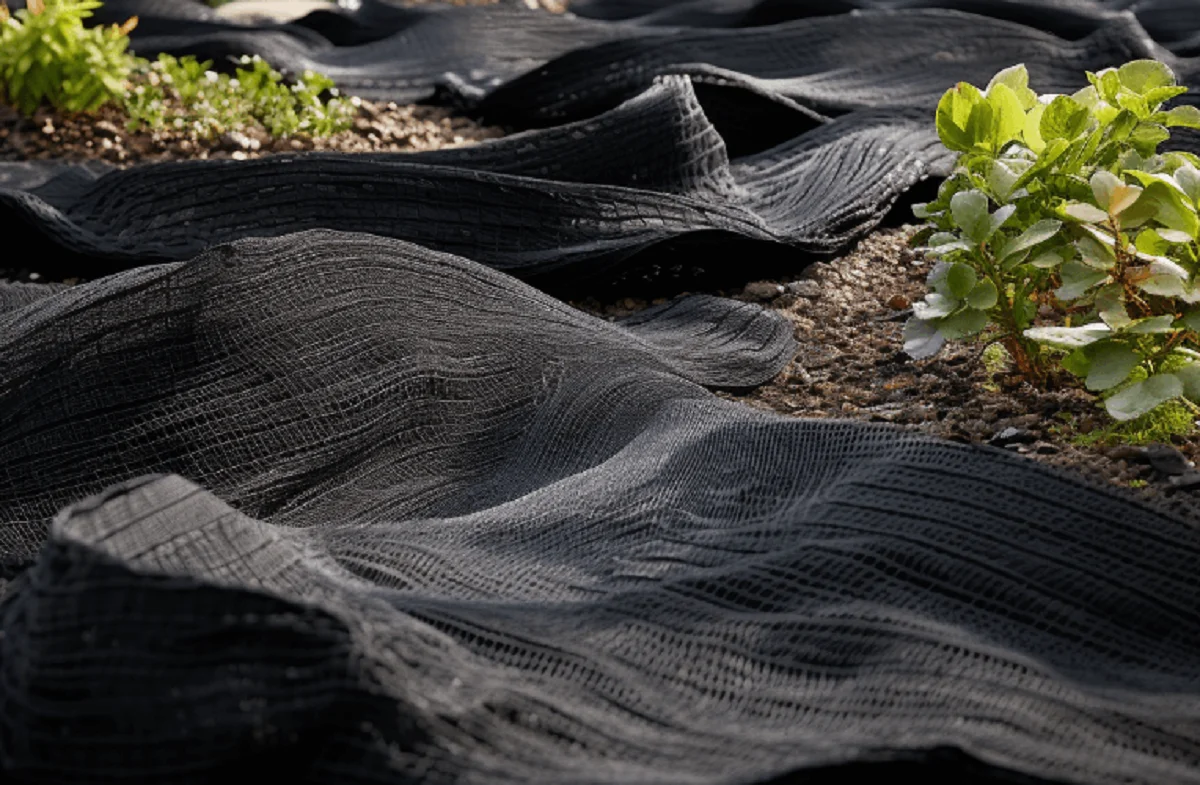
Table of contents
What is Landscaping?
Beautifying your garden or outdoor area by modifying the space is landscaping. Its front porches with potted plants, shrubs by the fence, bougainvillea on the walls, and graveled pathways. Many people see landscaping as purely aesthetics, but it’s more than that.
Landscaping can be a beautiful way to hide cracks or water tracks in your walls. It can also help protect your soil from erosion and harsh weather, and it doesn’t stop there!
Why Use a Landscape Fabric in My Garden?
Using landscape fabrics in your garden protects your soil from direct sunlight. When used correctly, the material becomes a weed barrier while beautifying your green space. Landscaping fabrics limit and eliminate the need for chemical herbicides, but different material types serve unique purposes.
The wrong material won’t prevent invasive plants from growing among your crops. So, let’s avoid that by learning the common types of landscaping materials and how to use them.
Kinds of Materials for Landscaping
Landscaping materials can either be woven or non-woven. By now, you should know the different kinds of landscaping fabrics that serve many purposes. This guide shows you the two common types and where to use them.
Woven Landscape Material
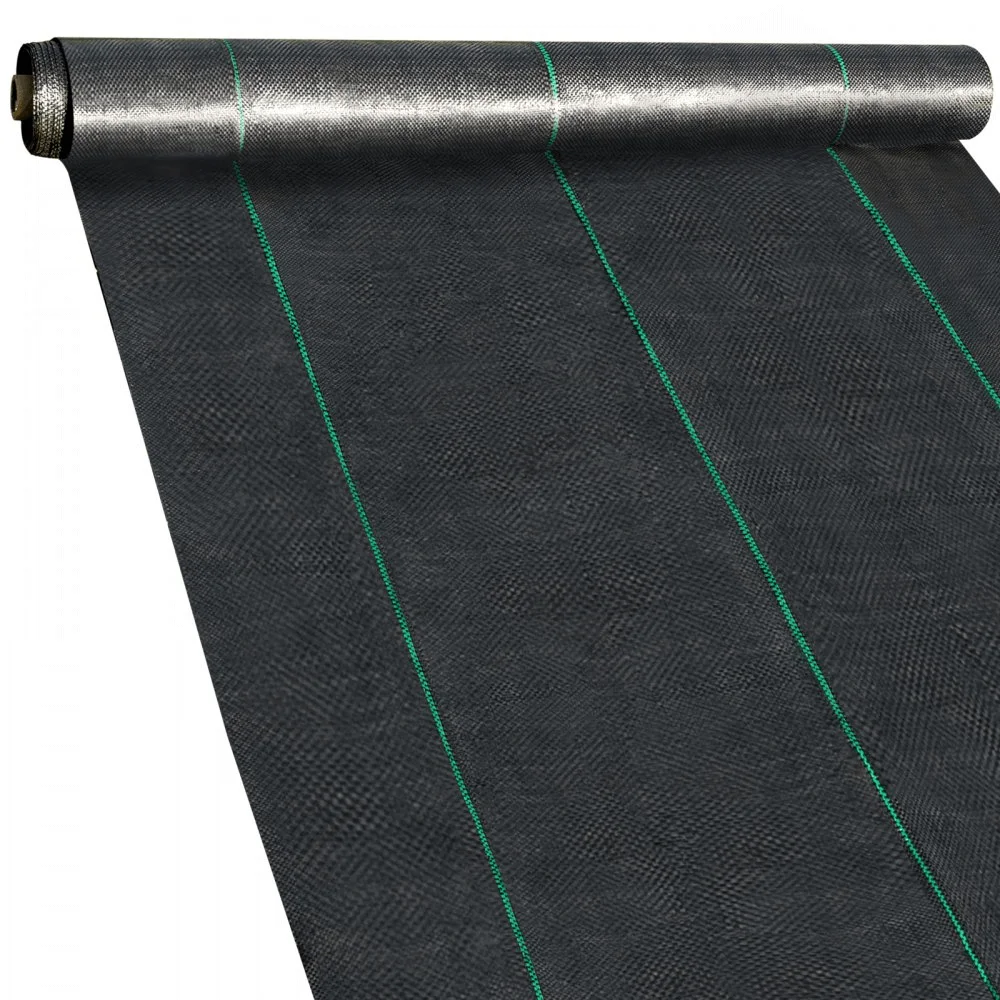
When you see examples of woven landscape material, it’s typically the woven type, like the VEVOR heavy-duty weed control fabric. That’s because it’s a nutrient, air, and water-permeable landscape fabric for your plants to grow while blocking weeds.
Woven materials can either be perforated or non-perforated polypropylene or linen fibers.
Landscape materials don’t always come with ultraviolet resistance, but high-quality brands like VEVOR treat their fabrics to withstand sun damage.
A woven landscape material is ideal for low-maintenance flower beds, non-annual vegetable gardens, shrubs, and trees. Get the perforated woven weed barrier fabric for your vegetable gardens because the precut holes make planting easy.
Prices depend on the shape and size of the landscape fabric, but you can get a 4ft x 100ft VEVOR weed barrier fabric for as low as $44.99. It’ll cost you $104.99 to get a larger size of geotextile fabric at 4ft x 300ft.
Although they don’t need periodic changes, you shouldn’t use your woven landscape material in a space with heavy traffic. Try this next option instead.
Non-Woven Landscape Material
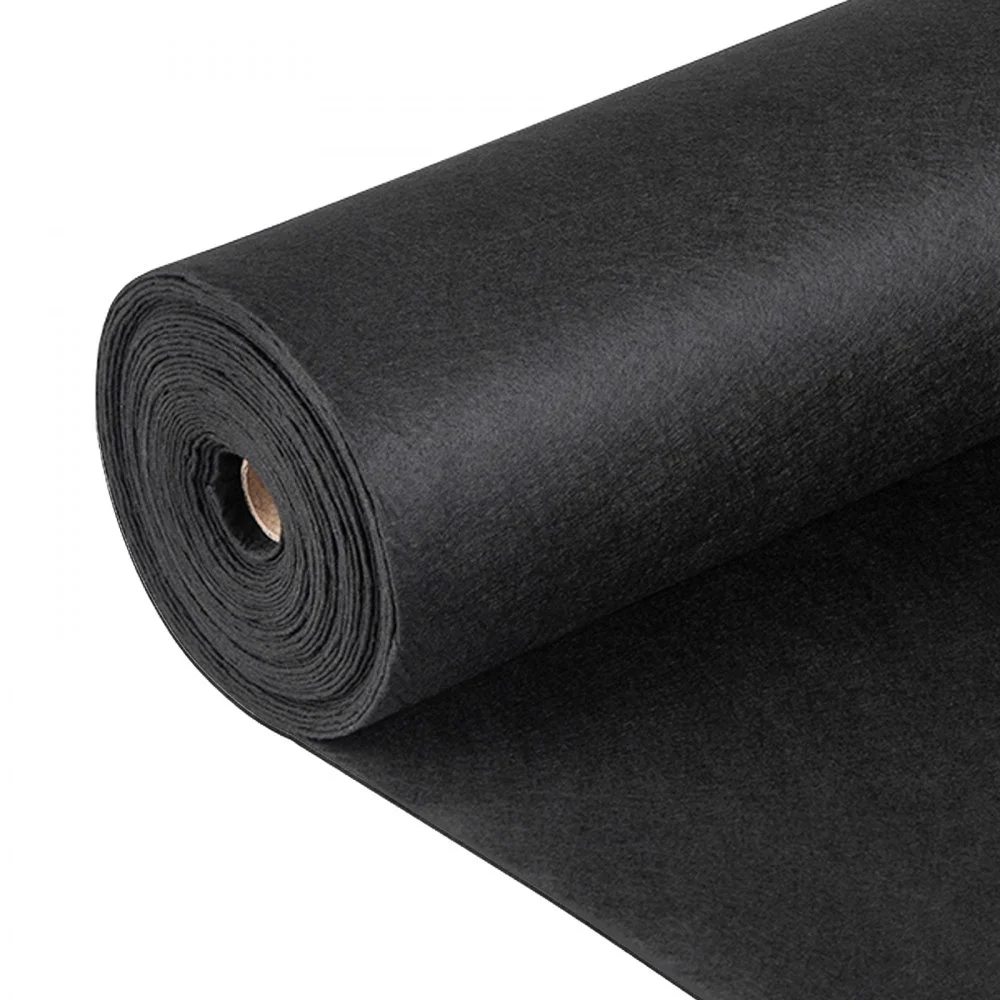
For your hardscaping, irrigation, drainage, wall applications, driveway underlayment, and protective borders, use non-woven landscape materials made from polyester fibers or polypropylene. The production uses a bonding technique to ensure tightly bound fibers.
So, unlike the other woven types, these materials are non-permeable or semipermeable at best. It’s semipermeable when the spun fibers are thin.
What does that mean?
Water, nutrients, and air wouldn’t pass through the fabric and if they do, it’ll be in little quantities.
That’s why non-woven landscape fabrics are ideal for hardscaping. Use them as a base for stone pavers to prevent weeds from growing out and stones from sinking into the ground. The VEVOR heavy-duty geotextile weed barrier fabric costs between $85.99 and $151.99 depending on the size you choose.
Which Landscape Material is the Best?

With these many options, it’s easy to wonder about the best landscaping material. Should you stick to plastic such as polypropylene or embrace a softer fabric like linen? You’ll get your answers now in the form of a comparison.
Pros of the Woven Landscape Material
- Easy to Cut: A sharp garden scissors can cut an X on your woven landscape fabric without tearing the rest of the material.
- Degradable: As a gardener, it’s highly likely that you care about the ecosystem. So, getting a woven landscape material is in line with your values since it’s degradable. That means you can recycle the sheet once you’re done using it as a weed blocker.
- Quality Soil: You won’t worry about erosion from heavy rain or scorched earth from hot sunlight when you use woven landscape materials. Your soil would also receive all the necessary nutrients without encouraging invasive plant growth.
- Multipurpose: You can use woven landscape materials almost anywhere even on your sidewalk, gravel paths, and stones. Especially if it’s a double-layered material like VEVOR’s weed barrier.
Pros of the Non-Woven Landscape Material
- Impermeable: Yes. Sometimes you don’t need a landscape material that allows easy water passage especially if it’s for hardscaping such as protective borders and irrigation. So, in this case, the tightly bound fibers are a plus.
- Durable: Because of its thick fabric, non-woven landscape materials last longer than their counterparts. VEVOR geotextile weed block fabric is tear-proof, erosion-proof, and damp-proof with a tensile strength of 350N. They’re rarely affected by weather changes such as harsh sunlight to cause burns or flooding to weaken the fabric’s surface.
- Soft and Flexible: If you think the tensile strength and impermeability make the VEVOR non-woven landscape material hard and stiff, you’re wrong. Because it’s a needle-punched fabric, the strength doesn’t take away its flexibility and softness. So, there’s no risk of it breaking down with age or weighing down your greens.
- Versatile: Being impermeable and durable makes the non-woven landscape fabric the most versatile type of weed-blocking sheet. When installed properly, they ward off pests and insects while preventing invasive plants from taking root. You can also extend its use to bridge maintenance, medium-scale farming, and french drains protection.
Seeing the benefits of both types of landscaping fabrics, by now, you should have your answers. But if you’re still lost, let’s show you the way.
Woven landscape materials are the best for vegetable gardens and flora while non-woven landscape fabric suits hardscaping, irrigation and stony fixtures.
Where to Use Landscape Materials in Your Garden
Use a landscape material underneath hardscaping, flower beds, gravels, rocks, and above ground. Not too fast though! Let’s take each of these positions one step at a time for a better understanding of when to use your landscape fabric.
Flower Beds
Use woven landscape fabrics on your flower beds to preserve the nutrients and perforated materials if you change your plants often.
Gravels and Rocks
Woven and non-woven landscape materials work well with gravel paths but the latter is best for rocks.
The tightness of the fabric keeps small stones out of the soil and makes cleaning easier. Small stones typically come from rock mulches like pea gravel, river rock and shredded rubber.
Hardscaping
Hardscaping is a branch that includes all decorative and structured non-living aspects of landscaping from fences to driveways, patios, walkways, and pathways.
Because it’s not softscaping (dealing with gravels, flower beds, lawns, and grasses) you may think hardscaping doesn’t need protection but you’re wrong. The decorative, structured designs along your landscaping are still vulnerable to invasive weeds.
Lay your landscape fabric under your pavers to reduce the potential weed growth through the soil for low-maintenance care.
Since you’ve made it this far, you deserve some more installation tips. So here it is.
How to Install a Landscape Material
Firstly, get these gardening supplies before you start installing your landscape material;
Rake, garden hoe, measuring tape, landscape staples, garden scissors, mulch and a garden mallet.
Now follow these easy steps to install your landscape fabric whether it’s woven or non-woven.
- Clean the Soil: Clean your garden bed with a rake and remove all existing weed and debris. Then level the soil to your satisfaction so that your VEVOR landscape fabric can lay flat on the ground.
- Measure the Area: Whether it’s a small garden bed or a large hardscape site, you must measure the length and width. Doing this helps you know the ideal size of landscape material to use. Ensure you don’t get the exact size needed so that you can reinforce the edges with the extra material. But note that the excess shouldn’t be too much that it overlaps the area.
- Prepare the Soil: After cleaning and measuring your land, it’s time to treat the soil. Add whatever herbicides, fertilizers, composts, plant foods, and general soil care products you wish. Let it sit for a few minutes before laying your protective sheet.
- Lay your Landscape Material: Stand in one corner of the garden holding your rolled landscape material. Then, unroll the sheet from the edge until it covers the cleaned, flattened, and treated soil. This isn’t the end.
- Mark and Snip: It’s time to cut out excess fabrics minus a few inches for reinforcing the edges. Next, you cut out an X on the planting spots if you’re using a non-perforated woven landscape material because perforated materials are precut.
- Secure the Sheet: Once you’ve marked all X spots and cut off the excess fabrics, use the garden staples to pin down the landscaping material. This ensures the weeds don’t have any room to grow.
- Plant your Greens: You’re ready to plant! Place your flowers or Shrubs inside the X-marked spots and add more soil to the sides to ensure air-tight rows. Then add some mulch for aesthetics and functionality. It gives your garden bed a natural look while enriching your soil with moisture.
If you’re not great with DIY, it’s best to hire a professional.
Challenges of Using a Landscape Material
By the way, there are a few challenges to using landscape fabric despite their greatness!
- Time-Consuming Installation: Installation can be technical and stressful for regular people. It’s more tasking when it’s in an existing garden. So, it’s best to install your landscape material on a cleared bed.
- Unhealthy Soil: Unless you take strict care of your soil despite the presence of a landscape fabric, you risk unhealthiness. The sheet also keeps natural and beneficial organisms like earthworms away from the soil.
- Clogging: Neglected mulch on woven and perforated landscape fabric leads to clogging. This causes a lack of the necessary nutrients, air, and water penetrating into the soil for nourishment.
In other words, using a landscaping material is no excuse to neglect your regular garden and hardscape care.
Final Tips
There are more benefits than challenges to using landscape materials. If you’ve read this guide up till this point, bravo! You know VEVOR provides all types of material for landscaping in the highest quality.
If you can’t afford to buy landscape fabric, you can try old newspapers, ground cover plants, or organic mulch as alternatives. Some organic mulch include shredded leaves, wood chips, and clipped grass. We’ll leave you with a reminder that the best landscape material depends on what will occupy your landscape. Use woven fabrics for softscaping and non-woven fabrics for. Both types are available at VEVOR.

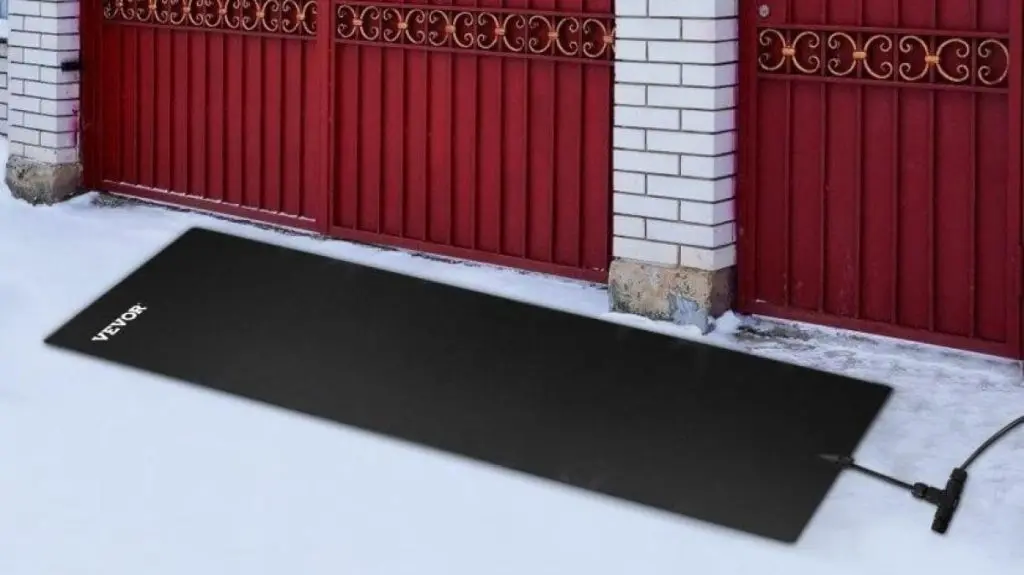
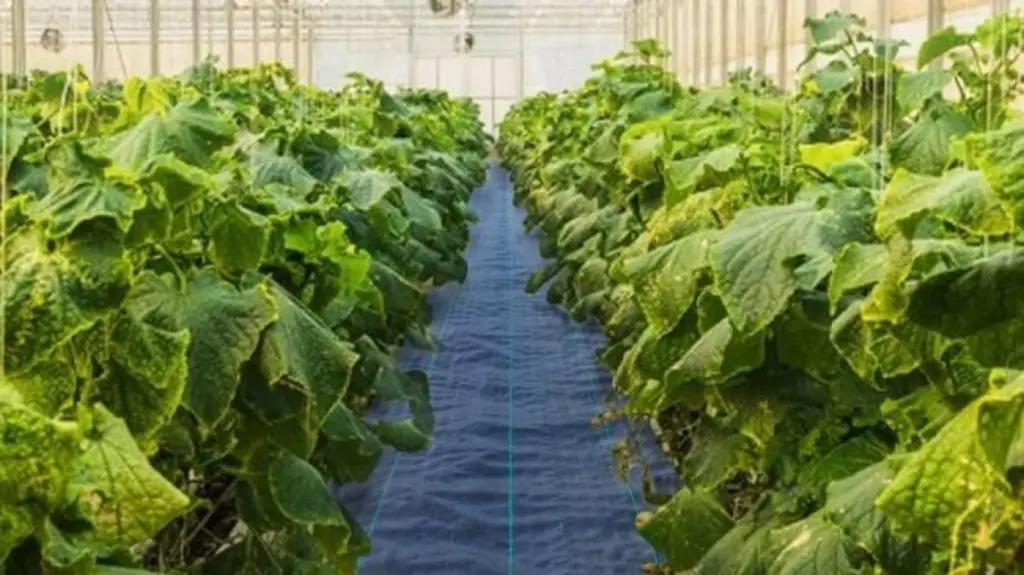

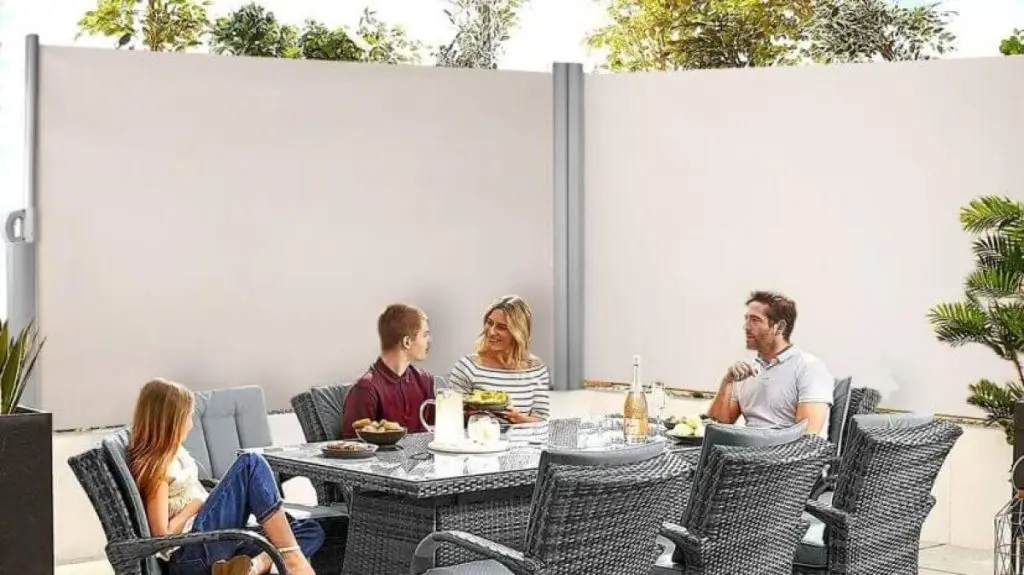
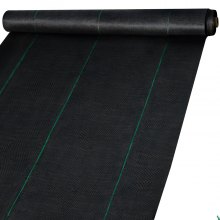
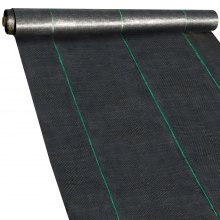


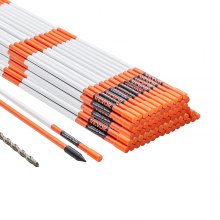
 Arabic
Arabic Danish
Danish Dutch
Dutch English
English Finnish
Finnish French
French German
German Hungarian
Hungarian Italian
Italian Norwegian
Norwegian Portuguese
Portuguese Romanian
Romanian Russian
Russian Slovak
Slovak Spanish
Spanish Swedish
Swedish